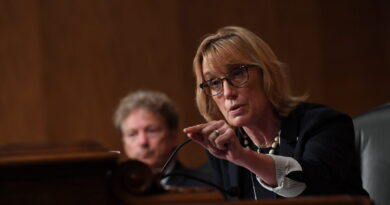White House To Strengthen K-12 Cybersecurity

Cyberattacks targeting schools across the U.S. have taken their toll on school districts, prompting the Biden administration to fight back with a bevy of efforts aimed at hardening cybersecurity defenses for educators and classrooms.
Citing data that eight school districts were hit by cyberattacks in the 2022-23 academic school year alone, first lady Jill Biden — flanked by officials from the departments of Education and Homeland Security — rallied with school administrators, educators and private organizations and discuss how to prevent cyberattacks from further disrupting K-12 education.
“With each new semester, technology becomes a more indispensable part of making sure our students’ imaginations can soar and ensuring that administrators can run their schools smoothly and safely,” said Biden. “But in districts across the country, cyberattacks have brought those systems to a halt. … Social Security numbers and medical records stolen and shared online, classroom technology paralyzed and lessons ended. So if we want to safeguard our children’s futures, we must protect their personal data.”
Speaking at the event with Biden on Tuesday, Secretary of Homeland Security Alejandro Mayorkas said that cyber threats now touch every school.
“That is why we at the Department of Homeland Security, alongside our partners at the Biden-Harris administration, are committed to providing communities and school systems with the support and the resources necessary to protect themselves, their infrastructure and their students,” he continued.
Mayorkas noted that through the Cybersecurity and Infrastructure Security Agency, DHS earlier this year released a free cybersecurity toolkit to provide K-12 schools with government resources and how they can best implement them.
He also said the administration is working with the technology industry to ensure what they provide public schools are “secure right out of the box.”
Mayorkas announced the administration put out a call Tuesday for applications for state and local cybersecurity programs that will make over $100 million available to school districts and governments allowing them to bolster cyber defenses.
Also announced were additional resources to drive better cybersecurity inside K-12 schools. Efforts included:
- An FCC proposal to establish a pilot program to provide up to $200 million over three years to strengthen cybersecurity at K-12 schools and libraries.
- Establishing a Government Coordinating Council through the Department of Education to coordinate policies and activities between federal, state and local leaders regarding cybersecurity.
- Training for 300 K-12 entities to conduct cyber exercises under the guidance from CISA.
Technology providers also announced commitments to provide schools with free or low-cost resources, including:
- $20 million from Amazon Web Services for a K-12 cyber grant program; free security training for K-12 IT staff through AWS Skill Builder; no-cost cyber incident response through its Customer Incident Response Team.
- A free suite of zero trust cybersecurity solutions for public schools with fewer than 2,500 students from Cloudflare to give small school districts faster, safer internet and email.
- Free and subsidized “security as a service” courses, training, tools and resources to all school districts from cloud-based K-12 software provider PowerSchool.
The White House in March released its National Cybersecurity Strategy that called on governments and the private sector to collaborate on addressing the country’s collective digital security by moving the responsibility of securing technology from users to manufacturers and to compel long-term investment in the way technology is designed.
The administration and the Office of the National Cyber Director released a workforce development component last week aimed at building up the nation’s cybersecurity skills and capabilities.
READ MORE HERE

